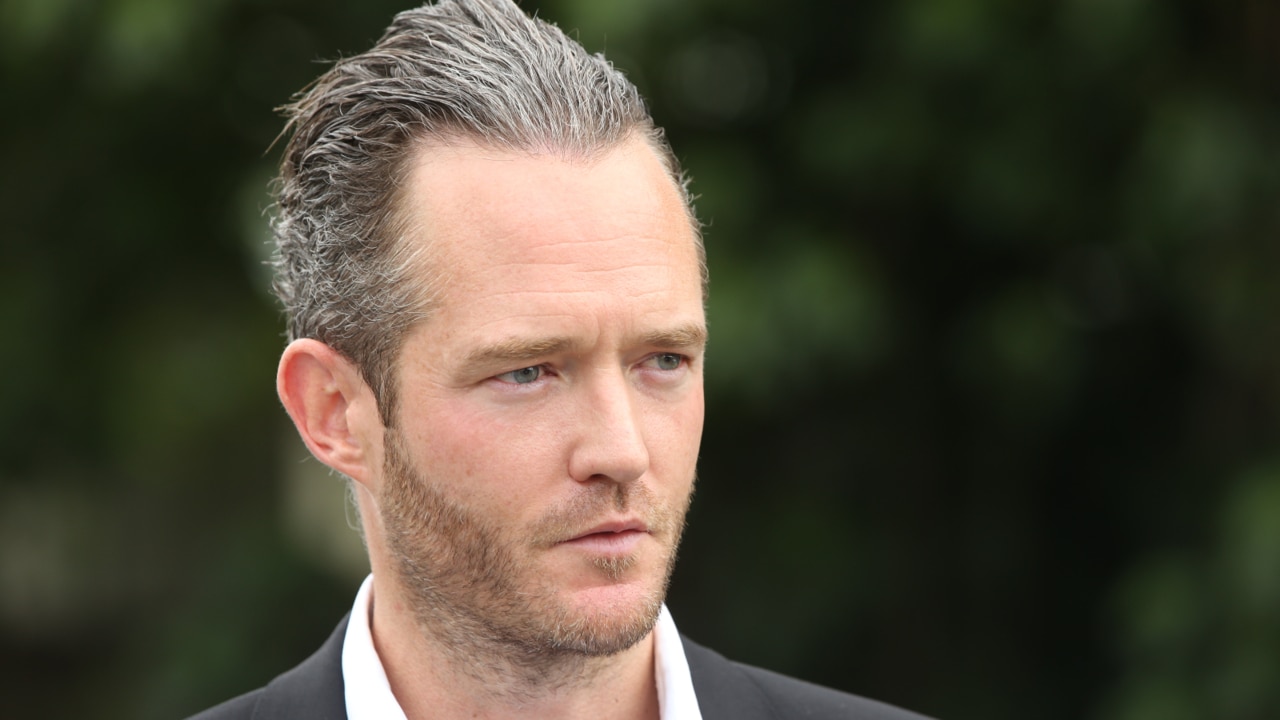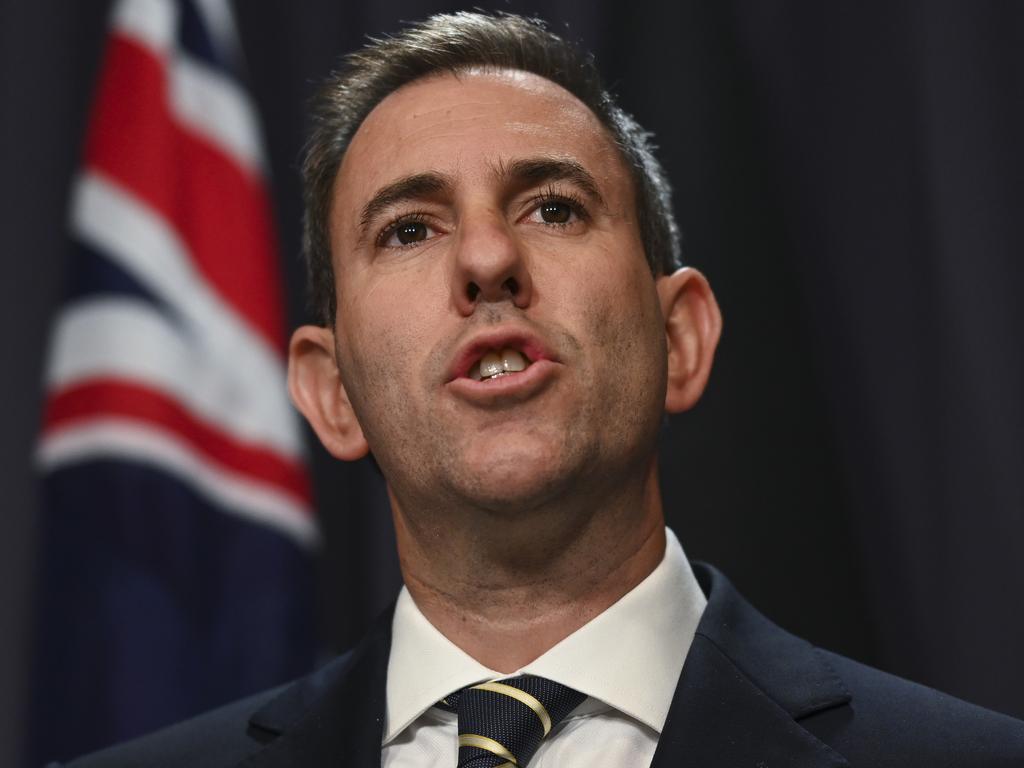Jim Chalmers warns unemployment rate likely to ‘tick up’ soon
The Treasurer says a jobs white paper to be released next week will still aspire to full employment that can occur without feeding inflation.

Business
Don't miss out on the headlines from Business. Followed categories will be added to My News.
Treasurer Jim Chalmers has waded into the incendiary debate of whether some job losses were necessary to keep a lid on inflation, arguing the Albanese government is still clinging to the aspirational belief of full employment, which will form a core pillar of the employment white paper to be released on Monday.
He described recent comments from billionaire property developer Tim Gurner that the jobless rate needed to lift 50 per cent to bring pain to the economy and shake up lazy workers as “insensitive, shocking and wrong”.
And Dr Chalmers said the view that low unemployment fed inflationary pressures wasn’t shared by the quiet majority of economists.
Mr Gurner’s statements were however not out of step with comments from Reserve Bank of Australia deputy governor Michele Bullock, who in June warned the ranks of the jobless would have to climb to 4.5 per cent to put a lid on inflation. Ms Bullock was later appointed governor of the RBA.
But Dr Chalmers conceded unemployment was set to soon “tick up” due to a potent mix of higher interest rates and global economic uncertainty, confirming recent OECD reports, while the government was also growing increasingly uneasy about China’s economic ills hitting the Australian economy.
Speaking at The Walkley Foundation Business Awards event in Sydney, Dr Chalmers also said troubled airline Qantas and its new CEO Vanessa Hudson had “a lot of work to do to regain the trust of their customers and the country”.
The Treasurer poured cold water too on suggestions the government would liquidate the $256bn Future Fund to pay down the national debt but said he was starting to think about what the nation’s sovereign wealth fund should look like in 10 or 20 years as well as the future of its chair, former treasurer Peter Costello, whose term expires in February.
Dr Chalmers said there were no plans to liquidate the Future Fund, as it had served a useful purpose over its lifetime.
“I am starting to think about … in 10 or 20 years time, what does the fund look like … one of the things I am not contemplating is liquidating it and paying down debt,” he said.
In an answer to a question on unemployment and inflation, Dr Chalmers tackled the prickly issue of the challenge for policymakers to achieve a low rate of unemployment without fuelling excessive increases in wages growth and inflation. Economists call the lowest rate of unemployment that achieves this the “non-accelerating inflation rate of unemployment”, or NAIRU.

Dr Chalmers said an employment white paper to be released on Monday by the Albanese government – which will include the aspirational goal of full employment – could address the issue of as many people as possible having a job while at the same time ensuring inflation continued to moderate.
“Because even those who think that the optimal rate of unemployment in the economy and how that rate relates to inflation, the NAIRU, even those who focus very narrowly on that technical definition, which feeds a forecast … I think it’s possible to separate a technical assumption, from an aspiration from our objective.
“And on Monday I will release the employment white paper, which we’ve been working around the clock on for some time, ever since the jobs and skills summit, and what we’re trying to do with the employment white paper is to say, of course, it’s necessary that we have some kind of assumption, narrow technical, assumption about full employment.
“But that doesn‘t mean that it’s our goal, doesn’t mean it’s our overarching objective. It’s a different thing to be able to say, as I will on Monday, full employment is when everyone who wants a job can find a job without searching for too long. That’s different to the NAIRU.”
Dr Chalmers said inflation was moderating at the moment even though Australia had an unemployment level “with a three in front of it”.
“And ideally, we would keep unemployment as low as we can, keep participation as high as we can, keep wages growing in a sustainable way at the same time as inflation moderates – and so far that’s been the story, but it requires our ongoing vigilance.”
There was concerns however that unemployment was set to rise as a result of the last 12 months of tightening monetary policy, economic headwinds and new economic shocks from China.
“We think unemployment will tick up in our economy because of a combination of higher interest rates and global economic uncertainty, and we saw that in the OECD report overnight,” Dr Chalmers said.
“Obviously, we are especially concerned about China right now, I’ve said that publicly and I mean it, so we think unemployment will tick up but we start from a pretty amazing position.”
Turning to the Future Fund, Dr Chalmers said he would “have a conversation” with Future Fund chairman Mr Costello about his desire to stay on for another term.
“There is a big opportunity at the Future Fund, let me say that,” Dr Chalmers said. “There are a bunch of vacancies coming up on the Future Fund board. We are consulting on that. We are doing a lot of work on that. I will have a conversation with Peter, who I do respect and meet with. I’ll see if he wants to go around again. People speculate that he might not want to go around again, in which case we’ll appoint someone great.”
Mr Costello founded the Future Fund as federal treasurer in 2006 to make provision for unfunded superannuation liabilities. Today it looks after $256bn, including a $22bn Medical Research Future Fund.
More Coverage
Originally published as Jim Chalmers warns unemployment rate likely to ‘tick up’ soon





